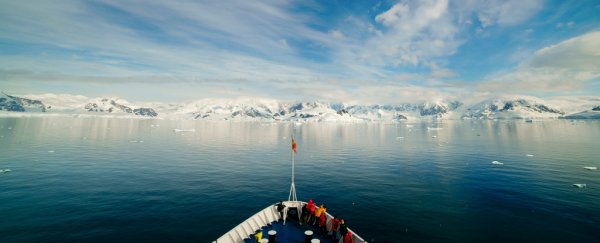Cruise liners are a surprisingly large source of greenhouse gases and pollution, but Norwegian cruise operator Hurtigruten says it's on its way to carbon neutrality – and all thanks to dead fish.
Although this sounds crazy, it does actually make a lot of sense. Norway has a large fishing industry, and leftovers and off-cuts are ripe for mixing with other organic waste to produce a type of fuel called liquid biogas.
"What others see as a problem, we see as a resource and a solution," the company's chief executive, Daniel Skjeldam, told AFP.
"By introducing biogas as fuel for cruise ships, Hurtigruten will be the first cruise company to power ships with fossil-free fuel."
Creating biogas is a smelly process, even without the fish. Its end product is a mixture of different gases that are produced when organic matter breaks down without oxygen.
It ends up being mostly methane and carbon dioxide, but can also have small amounts of hydrogen sulphide to give it that rotten egg smell.
This biogas can be purified and then liquefied, creating liquid biogas.
But while this is a step in the right direction, biogas isn't everyone's favourite renewable energy source.
Carbon dioxide is still generated in the creation process (although much less than traditional fossil fuels), and biogas is never going to be a one-size-fits-all approach, as it's not suitable for every kind of fuelling system.
Hurtigruten is also investing in six brand-new ships that will run on biogas, in addition to batteries and liquefied natural gas.
This is all part of Hurtigruten's plan to become completely carbon-neutral by 2050.
The 125-year-old company, which owns 17 cruise ships, is also banning single-use plastics to be more sustainable.
According to a spokesman for the company, the first ship could be ready as early as next year.
This announcement comes after a US captain of a P&O cruise ship was fined 100,000 euros (US$114,000) because he was burning fuel that contained sulphur higher than the legal European limit.
Hurtigruten has made environmental impact a particular interest of the company, partly because of where they travel in the world.
They run ships to both Antarctica and the Arctic, and travel in exceptionally pristine waters in the world.
Norway also has a zero emissions target by 2026 for cruise ships that are navigating their beautiful fjords.
Being "the world's largest expedition cruise line… comes with a responsibility," says Skjeldam.
Let's hope the rest of the cruise companies catch on.
